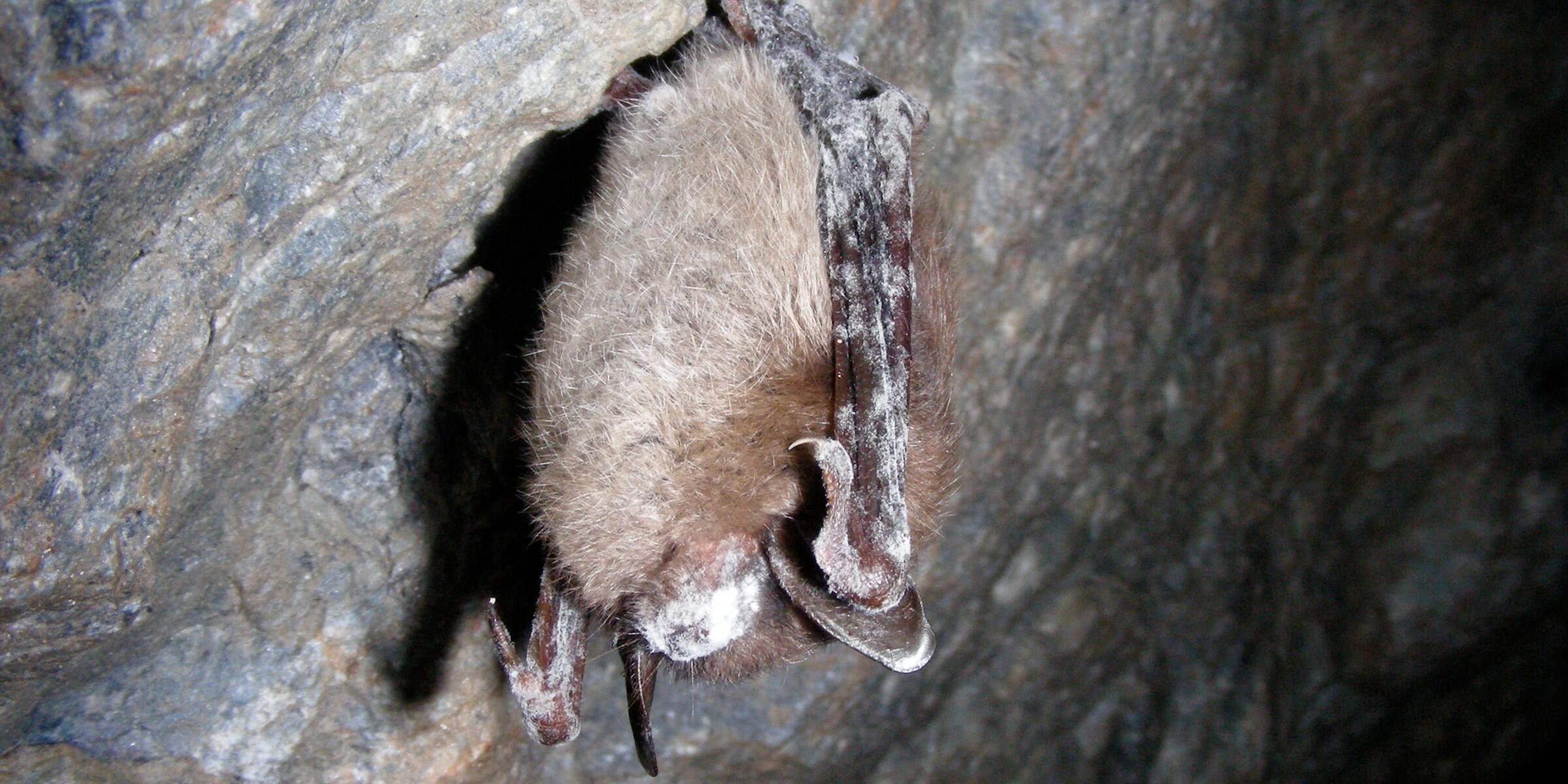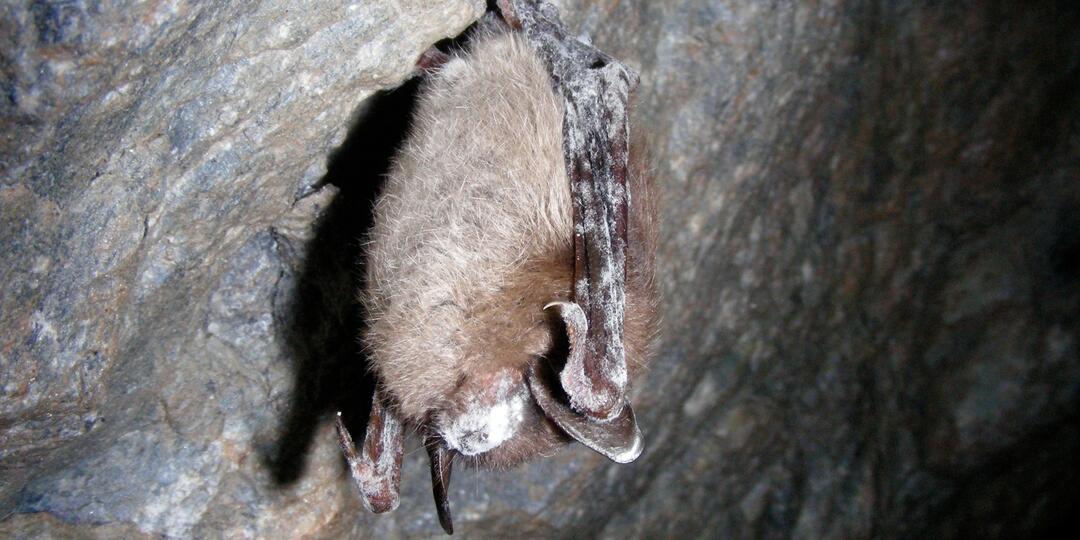Today there are only nine known species of bats in Vermont. Three species: silver-haired bats, hoary bats and eastern red bats migrate south in the winter and return in the summer where they are often found roosting in trees and buildings. The other six species hibernate in the winters in caves: big brown bats, little brown bats, Indiana bats, tri-colored bats, northern long-eared bats, and eastern small-footed bats. Of these six species, five are threatened or endangered federally and in Vermont. What does this mean exactly? A threatened species is likely to become endangered in the foreseeable future, putting them at a greater risk for extinction.
What challenges do Vermont bats face? Habitat loss has certainly put bat species in jeopardy. But White Nose Syndrome (Pseudogymnoascus destructans) has been their most prominent threat since 2006. It is an invasive fungus that thrives in the cold, damp hibernation caves and attacks the inactive bats. Resembling a white fuzz on the nose, wings and other hairless parts of bats, it damages the skin causing bats to warm up and end hibernation too early, depriving them of the energy they need to sustain themselves throughout the winter.
Considered one of the worst wildlife crises of modern times, White Nose Syndrome has claimed the lives of over 5.7 million bats in the northeastern United States. Currently all six species of cave bats in Vermont have been impacted by this syndrome. In just seventeen years it has decimated the populations of little brown bats and northern long-eared bats, by 90%.
Around the world, bat diets consist of a variety of things from insects, fruit, nectar, pollen, frogs, rodents, fish, even blood! There are only three known species of bats that consume animal blood, and two of these species consume only bird blood. However, 70% of bat diets consist mainly of insects such as flies, moths, beetles, and aquatic insects. All Vermont bats are insectivores (insect eaters). One bat can consume its own body weight in insects every night. Bats are crucial to agriculture because they keep insect numbers at bay, protecting our food crops and reducing
What can I do to get involved with Bats?
- You can build your own bat house! Provide a safe and warm place for female bats to raise their young. If you’re interested in building your own bat house or buying one, click here.
- You can volunteer your time to help monitor bat populations. If you find a bat colony indoors you can report it. Click here for those resources.
- You can keep your backyard natural and filled with native plants. If a tree dies don’t tear it out. Leave it there so it can become a natural habitat for some local bats. Click here for resources on native plants in your area.
Things you didn’t know about bats!
- Bats have great eyesight! However, most species use echolocation to navigate and hunt for prey, but not all bat species can echolocate.
- Echolocation is when bats produce a very high-pitched sound that bounces of objects around them to alert them of their presence, such as trees, animals, buildings and their prey.
- There are bats whose wingspan can reach up to six feet like the flying foxes. There are also bats that are so small you can hold them on the tip of your finger like the bumble bee bat.
- Bats are the only flying mammals!
Additional Resources:
Bat Week: Why Bat's Matter
Got Bats? Living with Bats in Vermont
Bat Gardens and Houses
White Nose Syndrome






